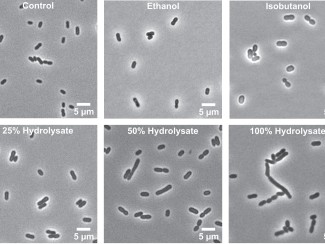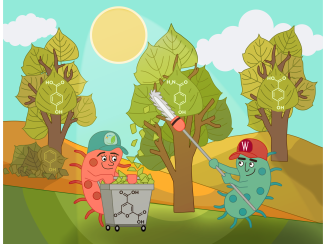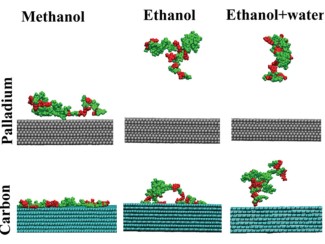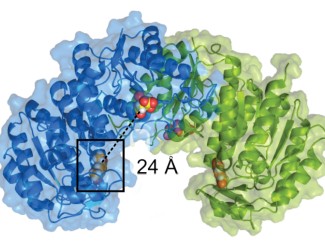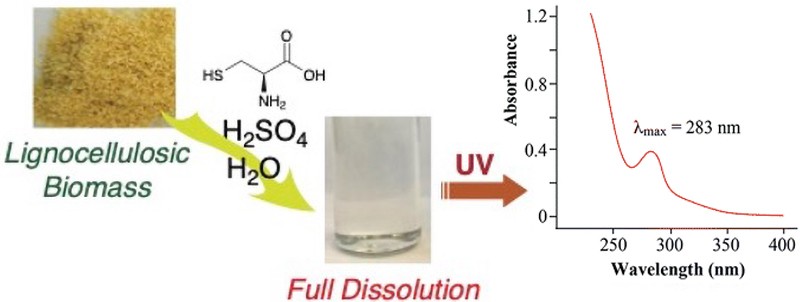
Using less energy and fewer toxic reagents than current processes, the new method could enhance large-scale applications in the bioproducts and biofuel industries.
The Science
Lignin, a durable polymer in plant cell walls, makes up around 20 percent of the organic carbon on Earth. Accurate measurement of how much lignin is in biomass is a key routine step in the production of paper, biofuels, and other plant-based materials. But current methods for measuring lignin are time-consuming and require many steps, dangerous reagents, and high temperatures. Researchers at the Great Lakes Bioenergy Research Center (GLBRC) and the University of Wisconsin–Madison, in collaboration with researchers at the South China University of Technology, have developed a faster and less chemically intensive spectroscopy-based procedure called the Cysteine-Assisted Sulfuric Acid (CASA) method. The approach uses a new reagent combination of the amino acid cysteine and sulfuric acid to completely dissolve lignocellulosic biomass under less extreme conditions than traditional methods.
The Impact
The CASA method offers several advantages over current methods of measuring lignin content. The procedure takes less than one-fifth of the time required for current processes, combines more easily accessible and environmentally friendly reagents, and can be performed at room temperature. It requires less starting material and can easily be scaled up for high-throughput applications. The new method should speed up biomass analysis and help advance research and development in the biofuels and bioproduct industries.
Summary
To better explore potential uses of lignin in the biofuel and bioproduct industries, researchers must be able to quantify how much lignin is present in biomass. Existing methods require extensive treatment under severe conditions, and a simpler approach would streamline analyses and industrial processing. In the new study, the CASA method completely dissolved woody biomass using a concentrated 0.1 g/mL cysteine-sulfuric acid solution at room temperature after stirring for just one hour—much faster than traditional methods, such as the over five-hour-long Klason method. The total dissolution with this novel reagent combination permits accurate lignin measurement using a common methodology, UV spectrophotometry.
The CASA method also presents several advantages that may be valuable for industrial applications. It saves energy as it does not require heating and uses minimal biomass sample while maintaining accuracy. It can also be applied to many samples at once to streamline large-scale analyses. Finally, the entire method is suitable for mechanization, which would make lignin processing and analysis more efficient and bring researchers closer to using lignin as a renewable resource.
Program Manager
N. Kent Peters
Program Manager, Office of Biological and Environmental Research
kent.peters@science.doe.gov, 301-903-5549
Corresponding Authors
Fachuang Lu
University of Wisconsin–Madison
fachuanglu@wisc.edu
John Ralph
University of Wisconsin–Madison
jralph@wisc.edu
Funding
The authors are grateful to the financial support for this work by the National Natural Science Foundation of China (31770621 and 31870560), and the DOE Great Lakes Bioenergy Research Center (DOE BER Office of Science DE-SC0018409).
Publications
Lu, F., Wang, C., Chen, M., Yue, F., Ralph, J., “A facile spectroscopic method for measuring lignin content in lignocellulosic biomass.” Green Chemistry 23:5106-5112 (2021) [DOI: 10.1039/D1GC01507A]

